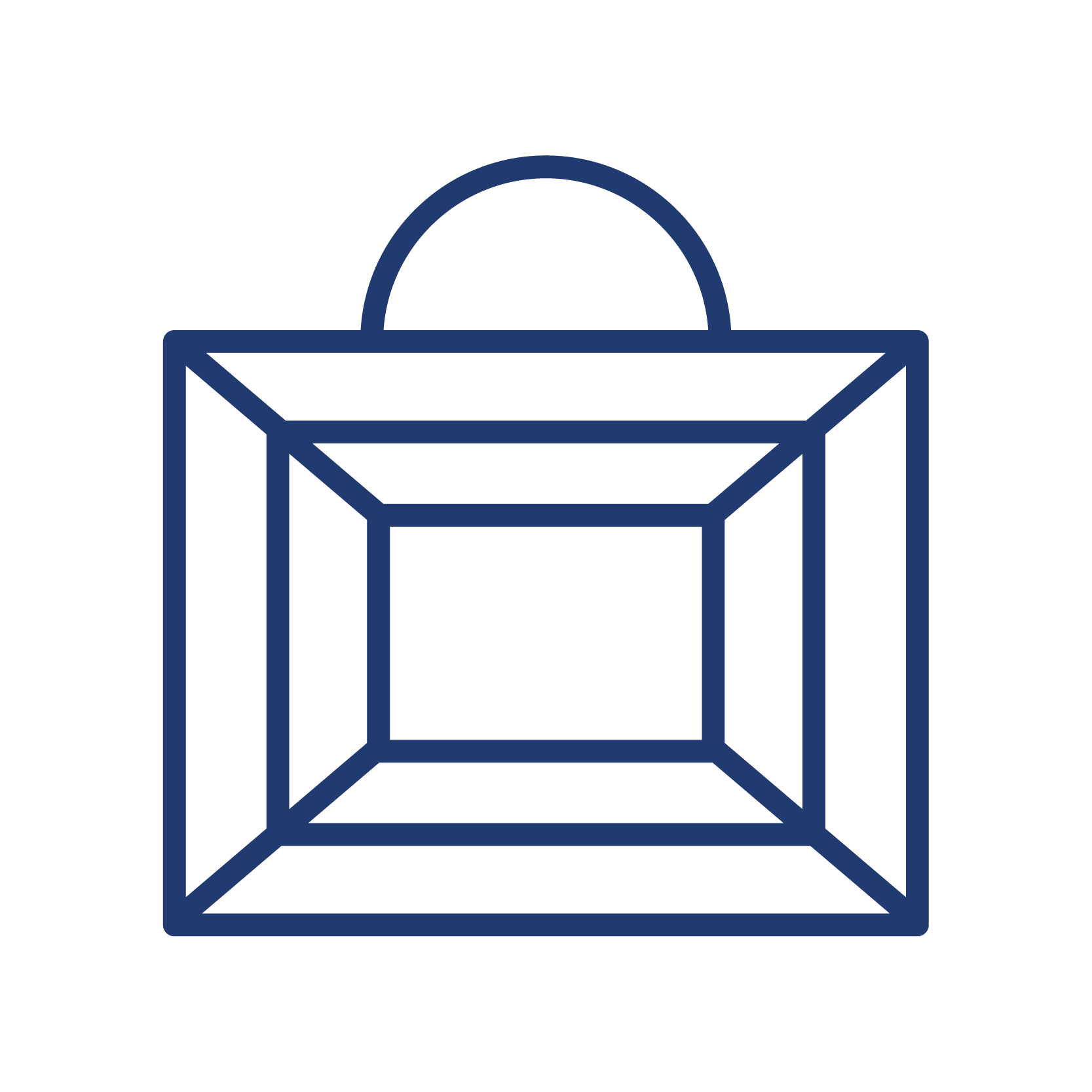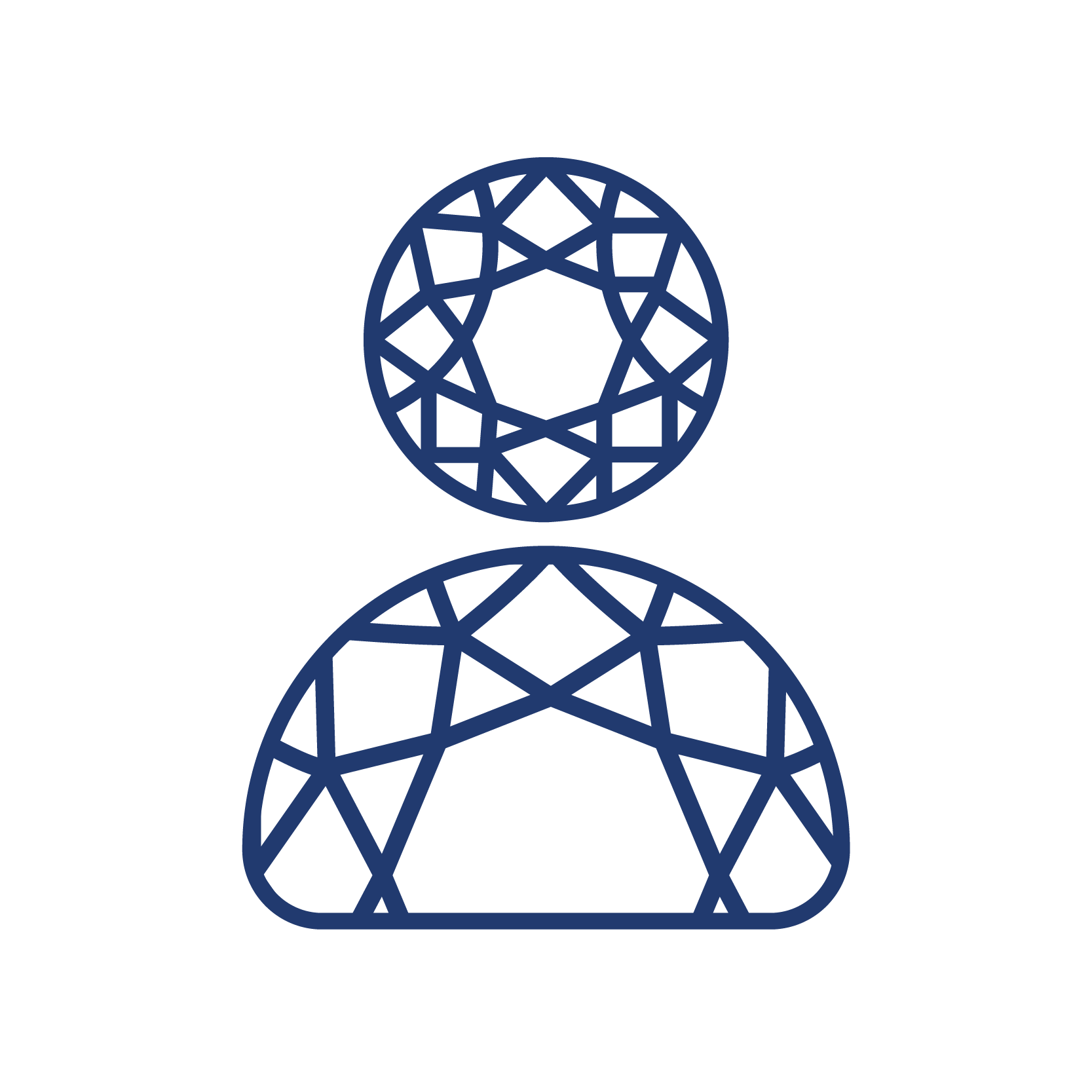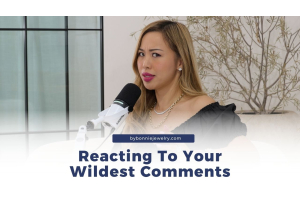How To Choose The PERFECT Cushion Cut Diamond Ring
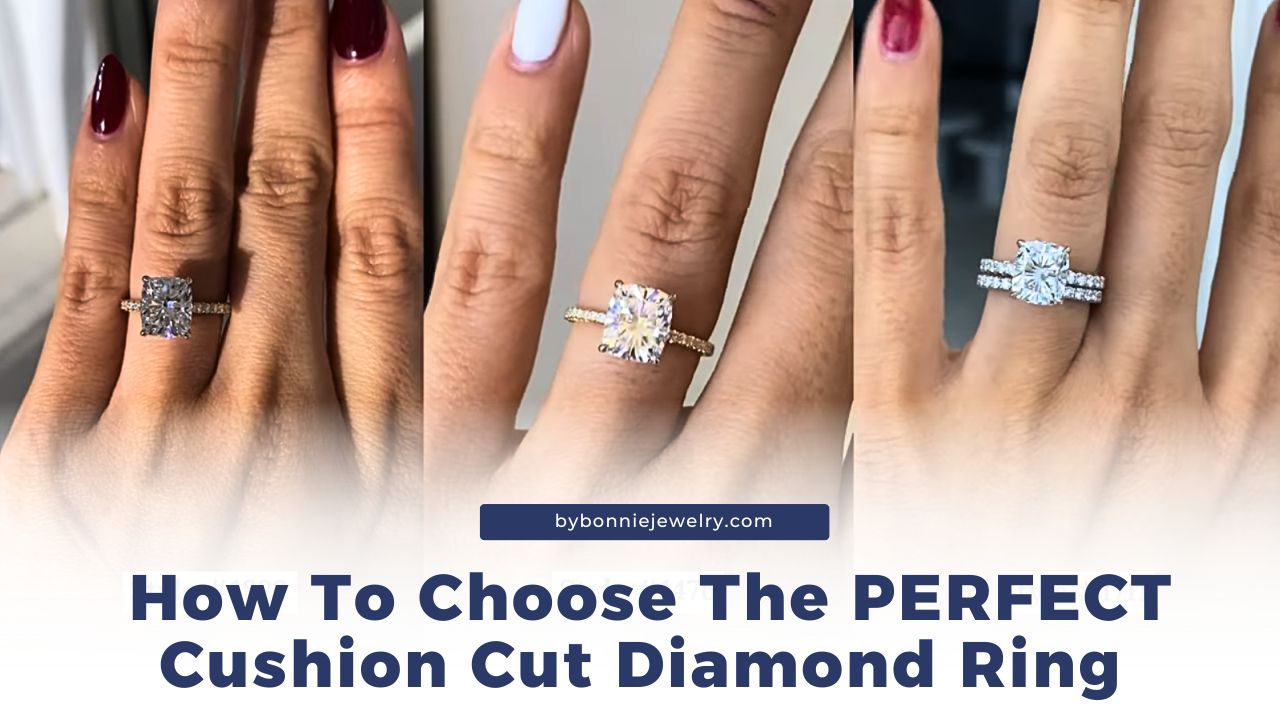
Who loves old mine cut cushions? Me! Hi Sparkles, and welcome back to another By Bonnie blog, where we dive deep into all things diamonds! Today, I’m thrilled to showcase a stunning piece on my finger—a gorgeous three-stone old mine cut cushion ring with trillions on the side. It’s a bit of a mouthful, but so worth it!
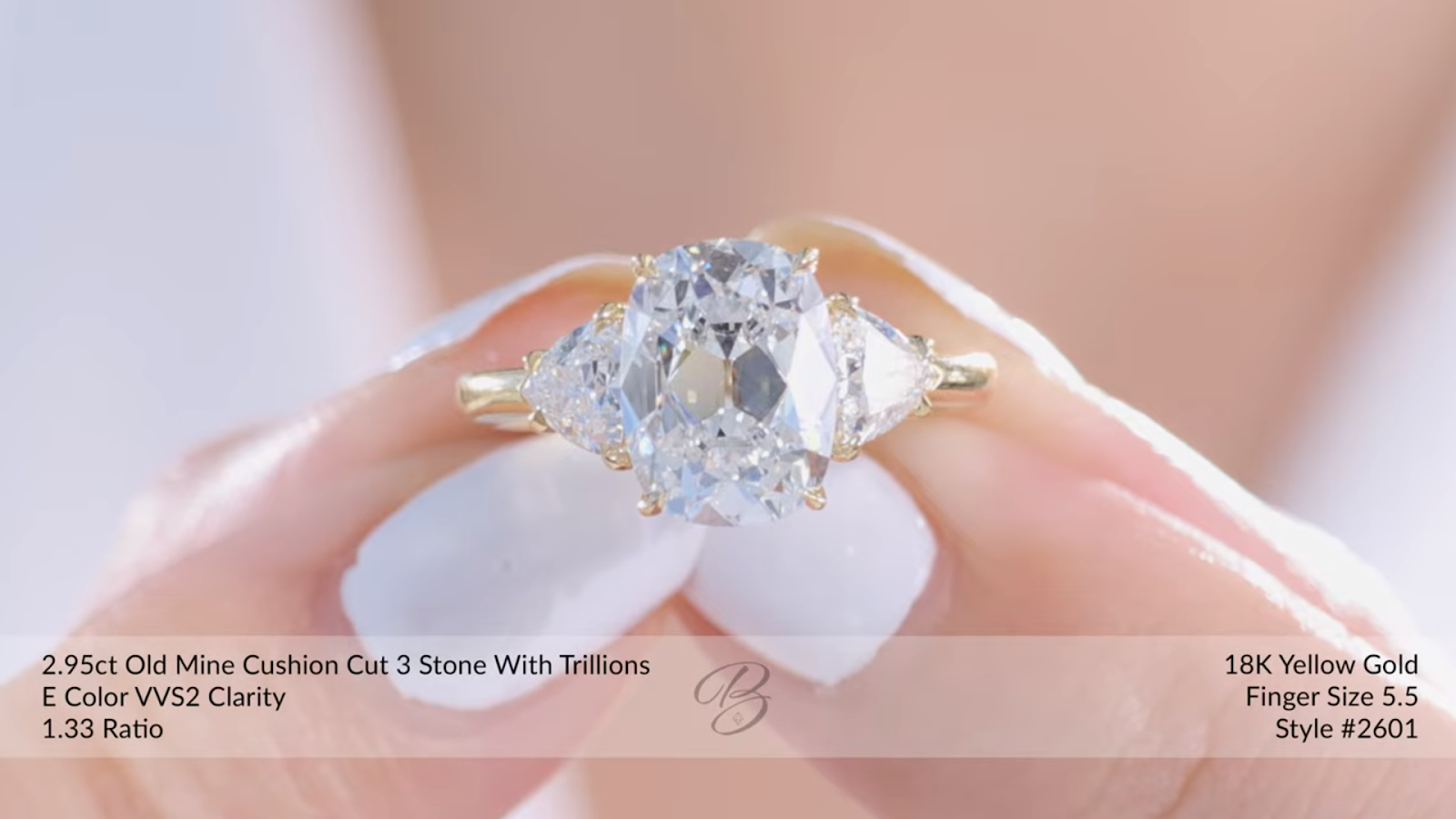

In this blog, I’ll break down every detail of this beautiful ring, from its color and clarity to the ratio and beyond. But more importantly, I’ll guide you through how to choose and differentiate between various cushion cut styles. When you ask for a cushion cut diamond, you’re faced with countless options and cutting patterns. I’m here to help you navigate them all.
And of course, we’ll also explore some fantastic wedding band pairings because what’s a ring without the perfect wedding band, right? I’m already getting excited!
Lately, we’ve been seeing a lot of solitaires, halos, and hidden halos with cushion cuts, but I’m particularly fond of the chunky elongated cushion. It’s special to me because I got engaged with an old mine cushion myself, so this really brings back cherished memories. If you’re all about sparkle and timeless elegance, stay tuned!
3 Stone Old Mine Cushion Cut Diamond Ring
First up, let me share that this is a lab-grown old mine cushion cut diamond. I know many of you ask about whether it’s lab-grown or natural. While both options are widely available, my focus is always on the craftsmanship. For instance, old mine cushions are rarer to find in natural stones these days, but with lab-grown diamonds, you can achieve stunning results.
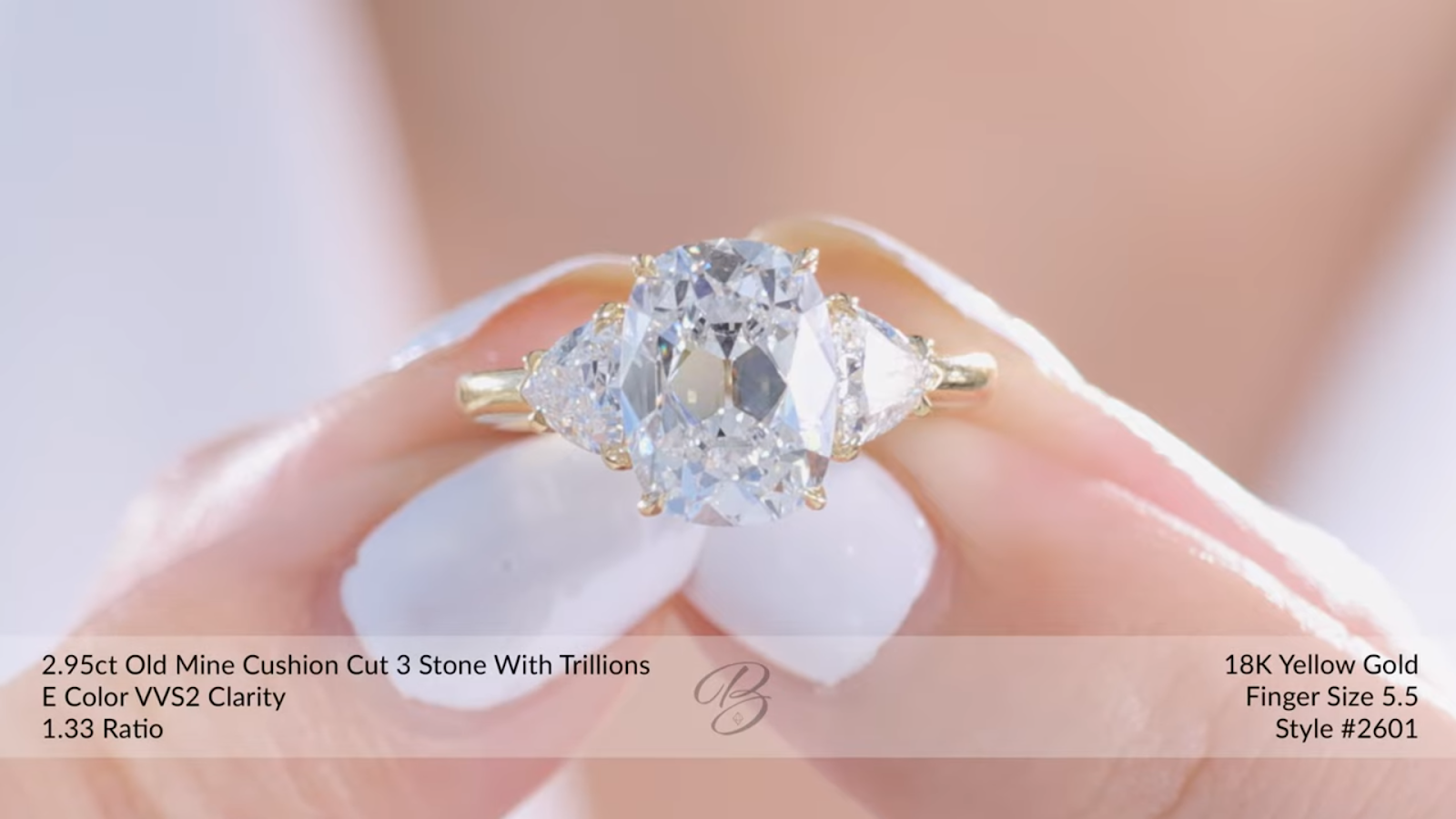

This particular piece is a three-carat old mine cushion with a high E color and VVS clarity. The client wanted an elongated cushion and requested trillions on the sides, which is a combination that, to me, is just pure perfection. The proportions of the trillions are about a third of a carat each, creating a beautifully balanced look.
It's crucial to trust your jeweler when it comes to selecting the right proportions and design details. This is where I truly shine—designing pieces without limitations and creating something breathtaking.
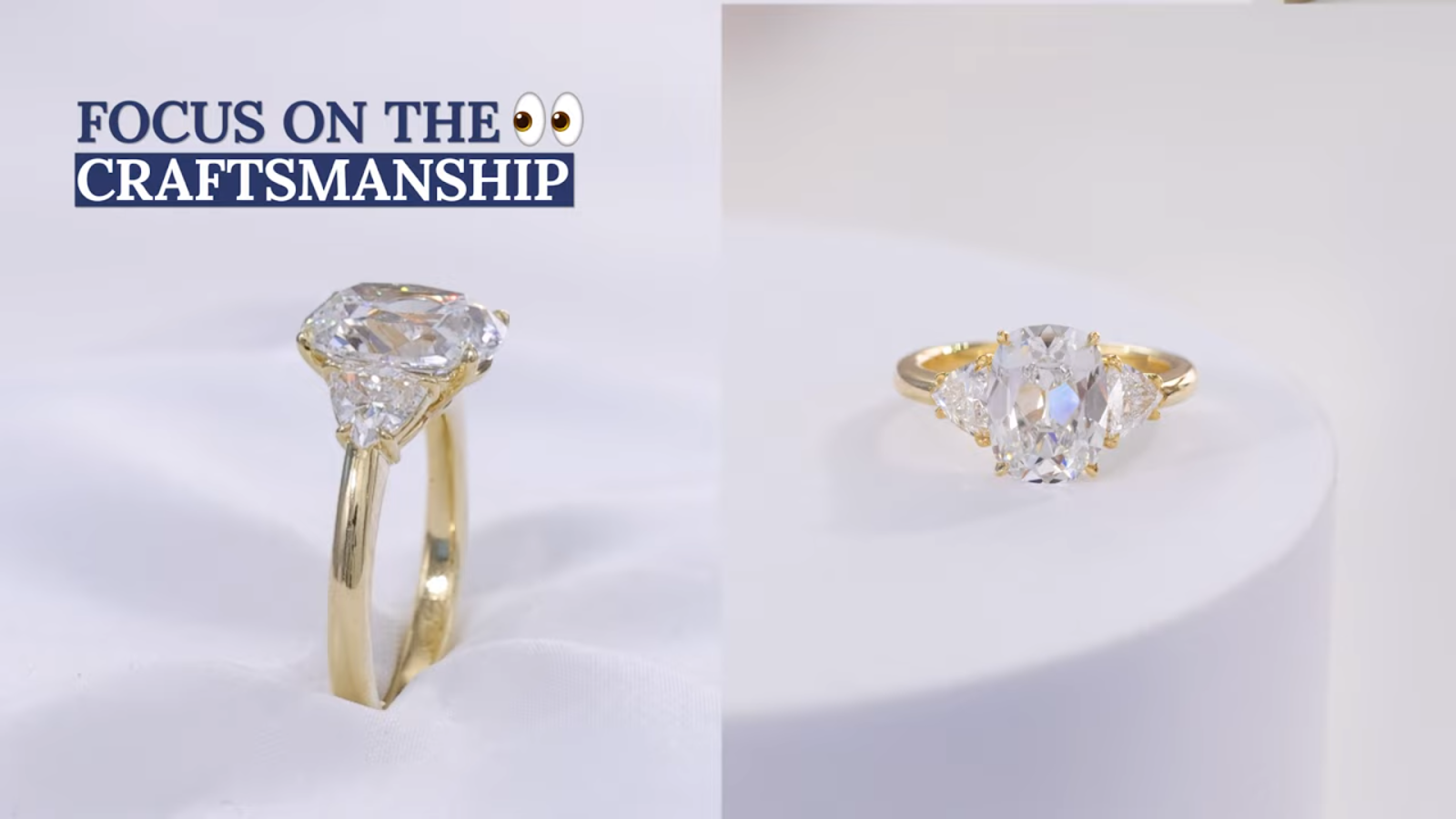

Take a look at the ring itself. We used minimal prongs to keep the focus on the diamond, resulting in a truly gorgeous piece. We previously discussed two-tone versus all-gold settings, and for this one, we went with all gold. The warmth and elegance of this ring are absolutely stunning, and I couldn’t be happier with how it turned out.
Different Types Of Cushion Cut Diamonds
Alright, let’s dive into the world of cushion cut diamonds! I’ve been getting tons of DMs and comments asking, “Hey Bonnie, what’s the difference between Brilliant, Crush, Brilliant Hybrid, and Old Mine cushions?” Let’s break it all down for you.
Cushion Brilliant Cut
Alright, let’s kick things off with the Cushion Brilliant cut. This cut can come in a variety of shapes, from more square to slightly elongated. It’s designed to mimic the sparkle of a round diamond, with larger facets that create a more even, consistent brilliance across the stone.
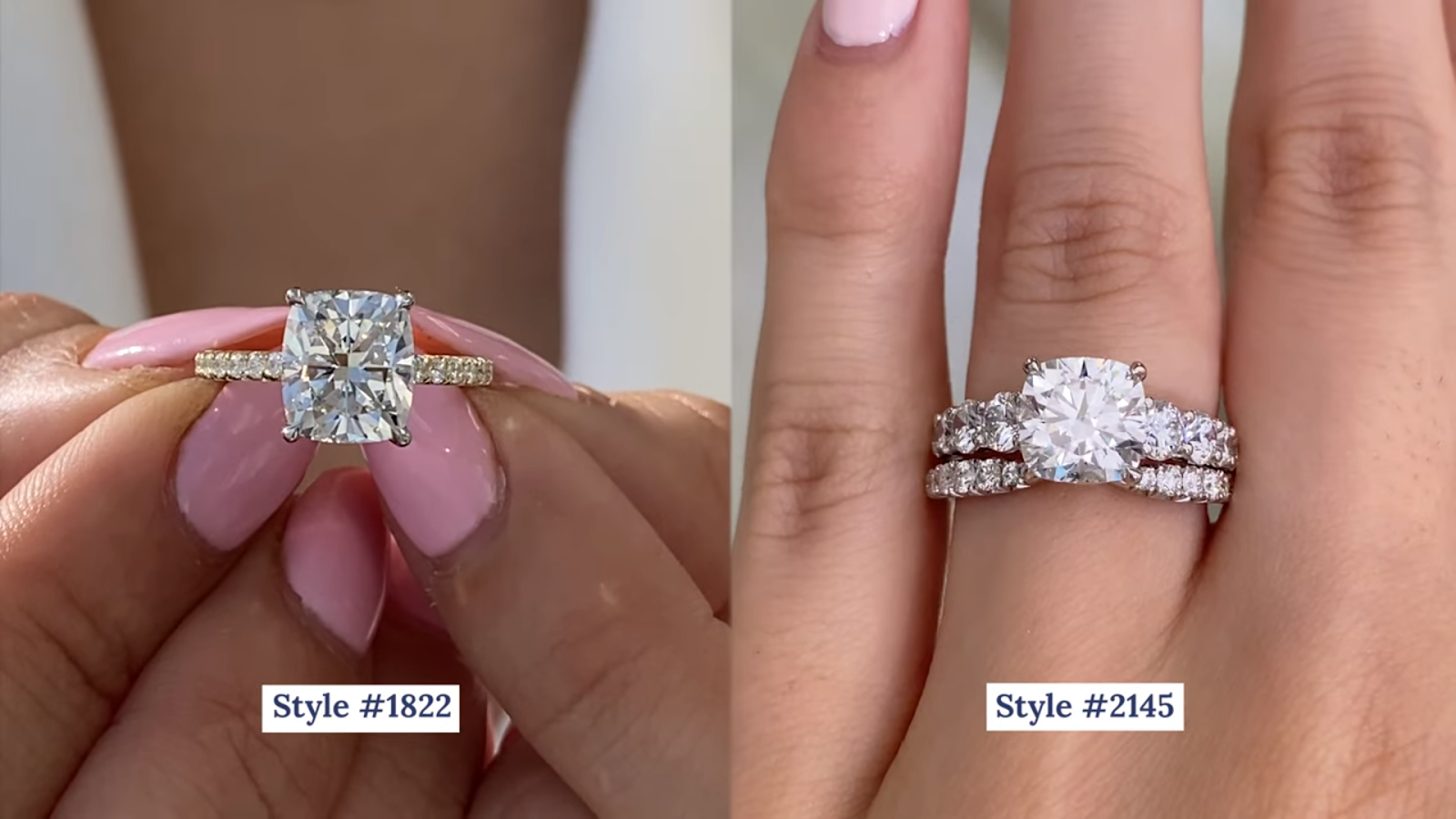

In natural diamonds, Cushion Brilliant cuts are quite rare. This is because achieving this cut requires sacrificing more of the rough diamond, which can be a bit of a trade-off. However, with lab-grown diamonds, you can find a range of Cushion Brilliant cuts, making it easier to get that sparkle you’re after.
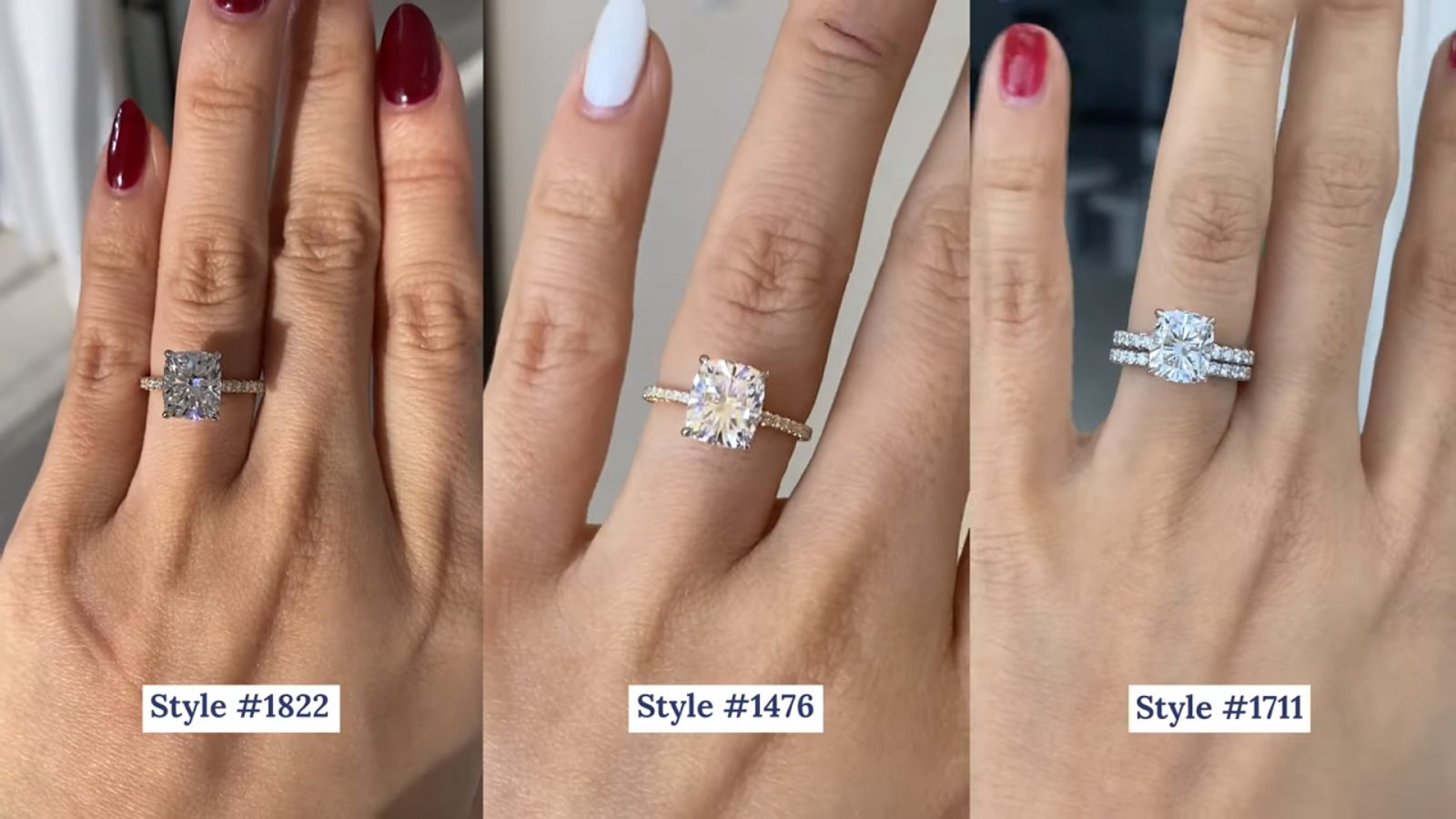

I’ve crafted many rings featuring Cushion Brilliant cuts, and I’m excited to show you what they look like.
Cushion Modified Brilliant Cut
Next up is the Cushion Modified Brilliant cut. My top piece of advice for anyone choosing a cushion diamond is to always look at the actual stone in person—don’t just rely on the certificate! This is especially crucial for Cushion Modified Brilliant because how the diamond looks in real life can vary significantly.
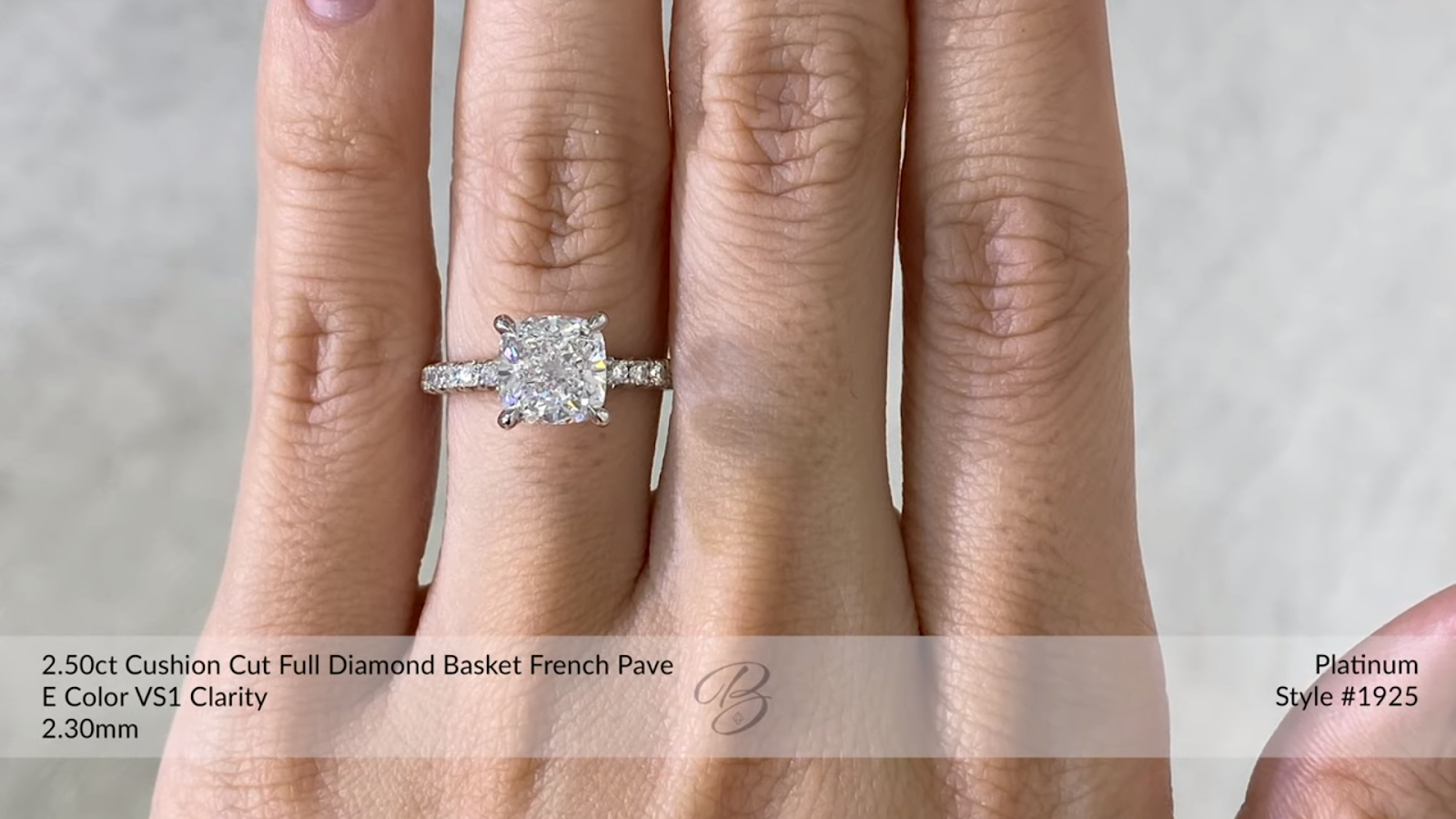

With the Cushion Modified Brilliant, you can get a really "crushy" look—imagine taking a bag of ice and crushing it. That’s the kind of sparkle you might see.
Cushion Hybrid Cut
Alright, let’s dive into hybrid cuts.
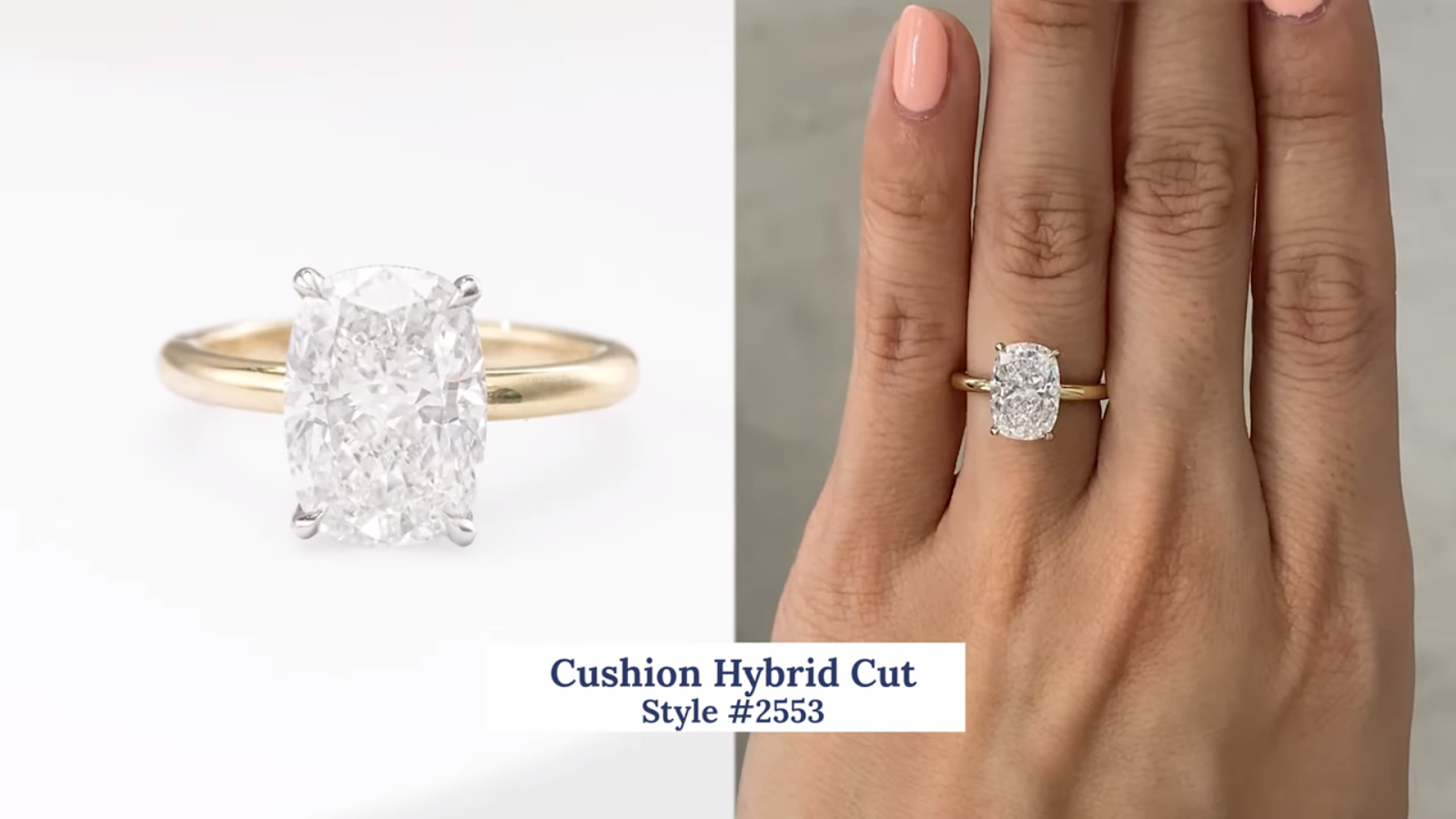

Picture this: if a cushion brilliant and a cushion modified crushed ice had a baby, you’d get a hybrid cut. It’s a fascinating blend that combines elements from both cuts, resulting in a unique sparkle. It can be a bit tricky to describe every single variation, but generally, it falls between the two styles.
Old Mine Cushion Cut
Number four is the Old Mine Cut.
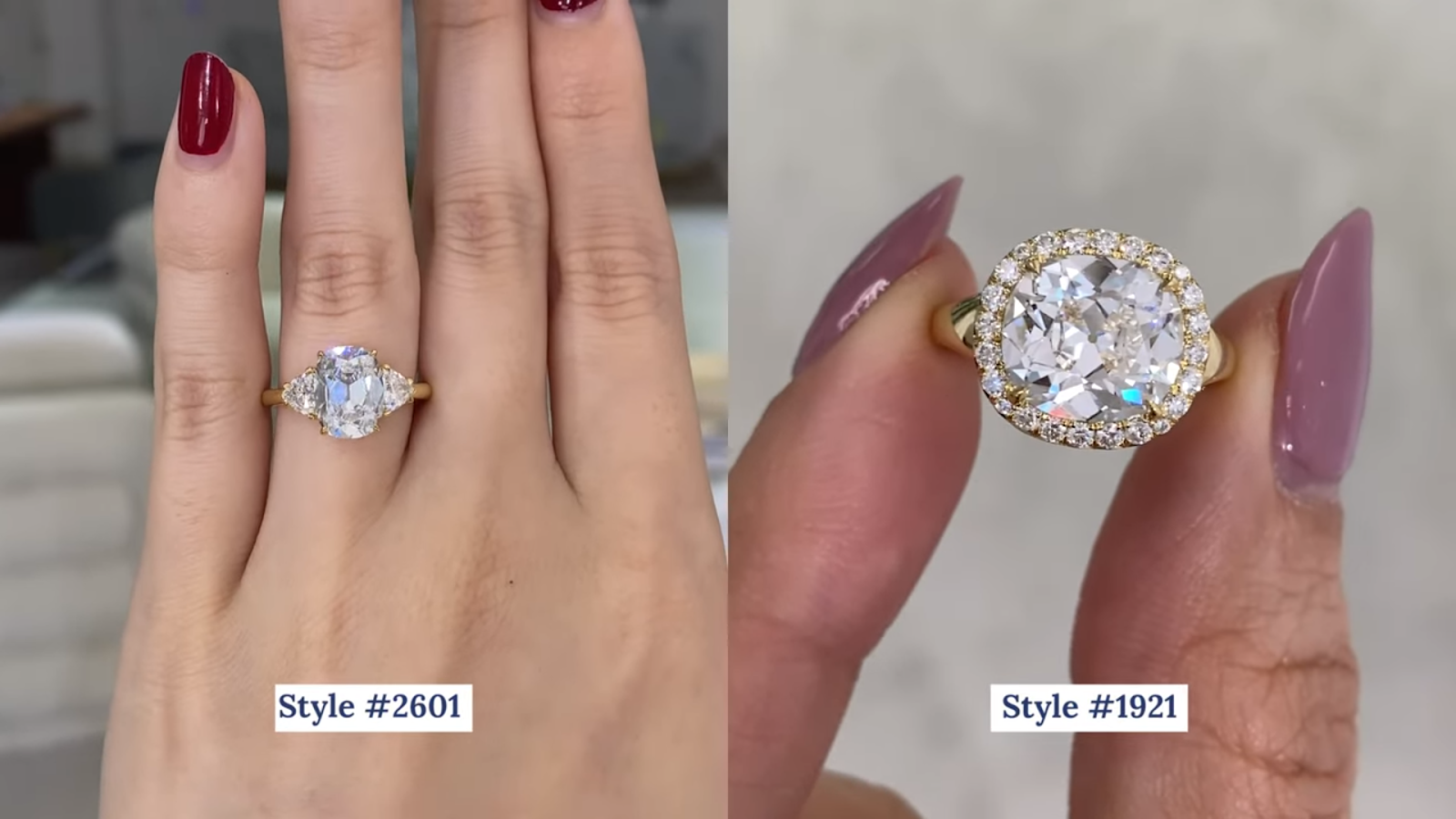

This classic cut can come in various shapes, from more square to elongated. It’s all about what suits your style best. The Old Mine Cut has that vintage charm and unique sparkle that’s hard to match. Whether you go for a square or elongated version, it brings a timeless elegance to any piece!
Specify The Type Of Cut You Want
When shopping for a cushion cut, work with someone you trust and narrow down your preferences before reaching out to your jeweler. Trust me, if someone calls and says, "I want a cushion cut but I don't know which one," it’s like trying to find a needle in a haystack with so many different cuts out there! Make sure you have a clear idea of what you want to make the process smoother.
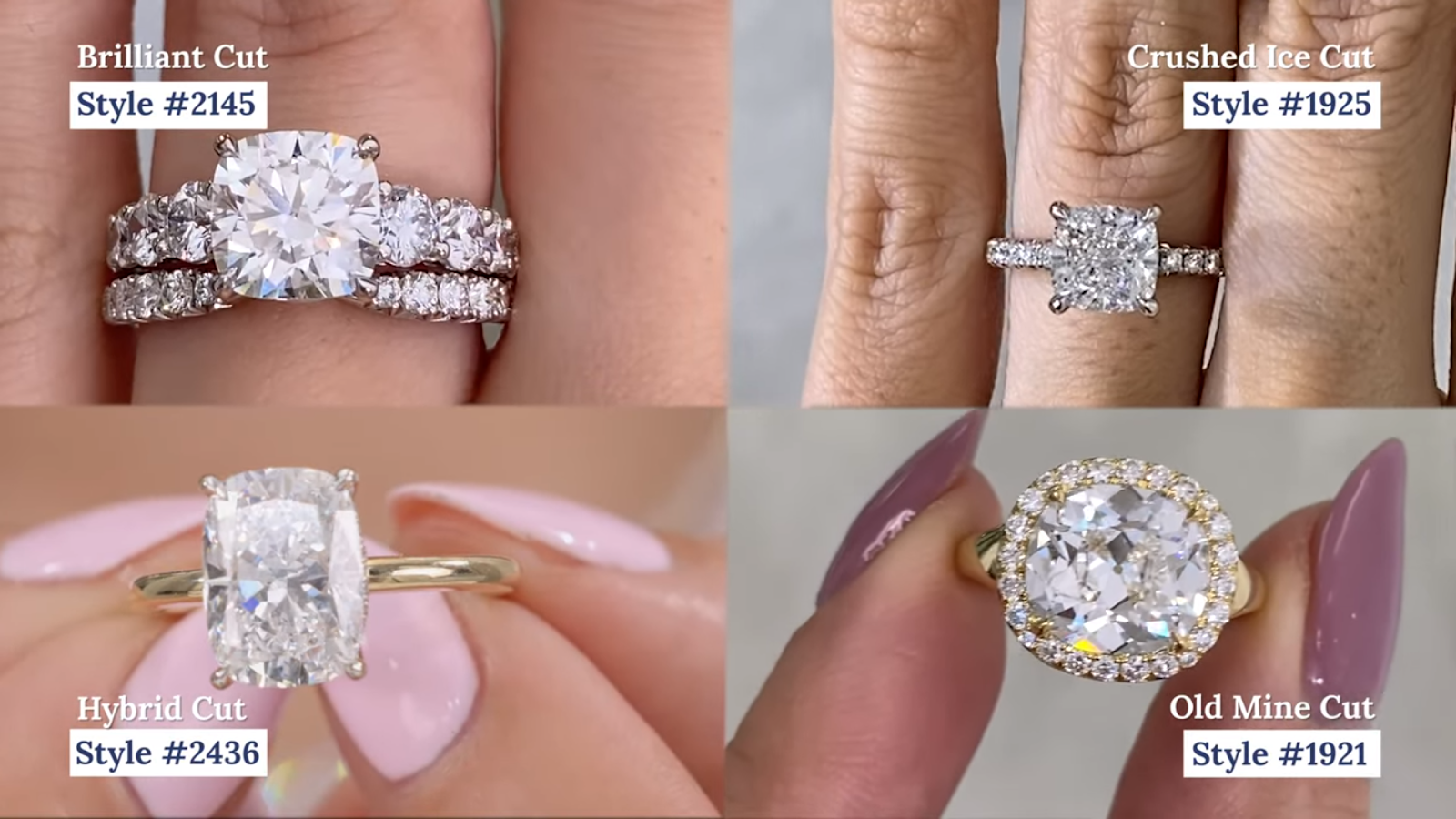

To help you out, here’s a comparison of what each cushion cut looks like. Take a look and see which one catches your eye!
Wedding Bands & Cushion Cut Diamond Engagement Ring
Alright, now that we’ve covered the different cuts, let’s dive into wedding band pairings.
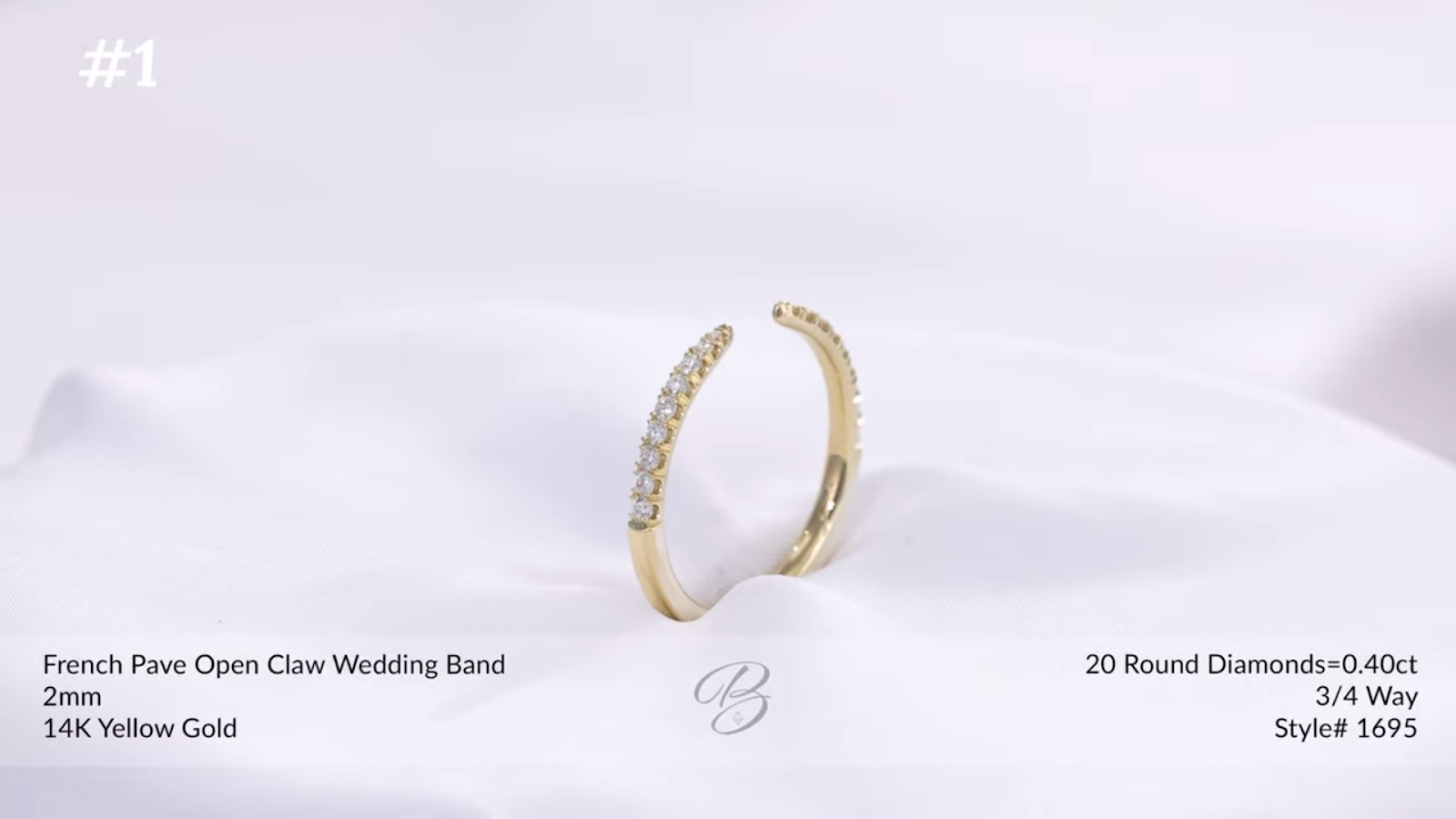

If you’re going for a minimalistic look and want your three-stone ring to really shine, consider a simple open claw pave band. This option is perfect for a flush fit, minimizing any gaps between your ring and band. It’s sleek and lets your ring design take center stage.
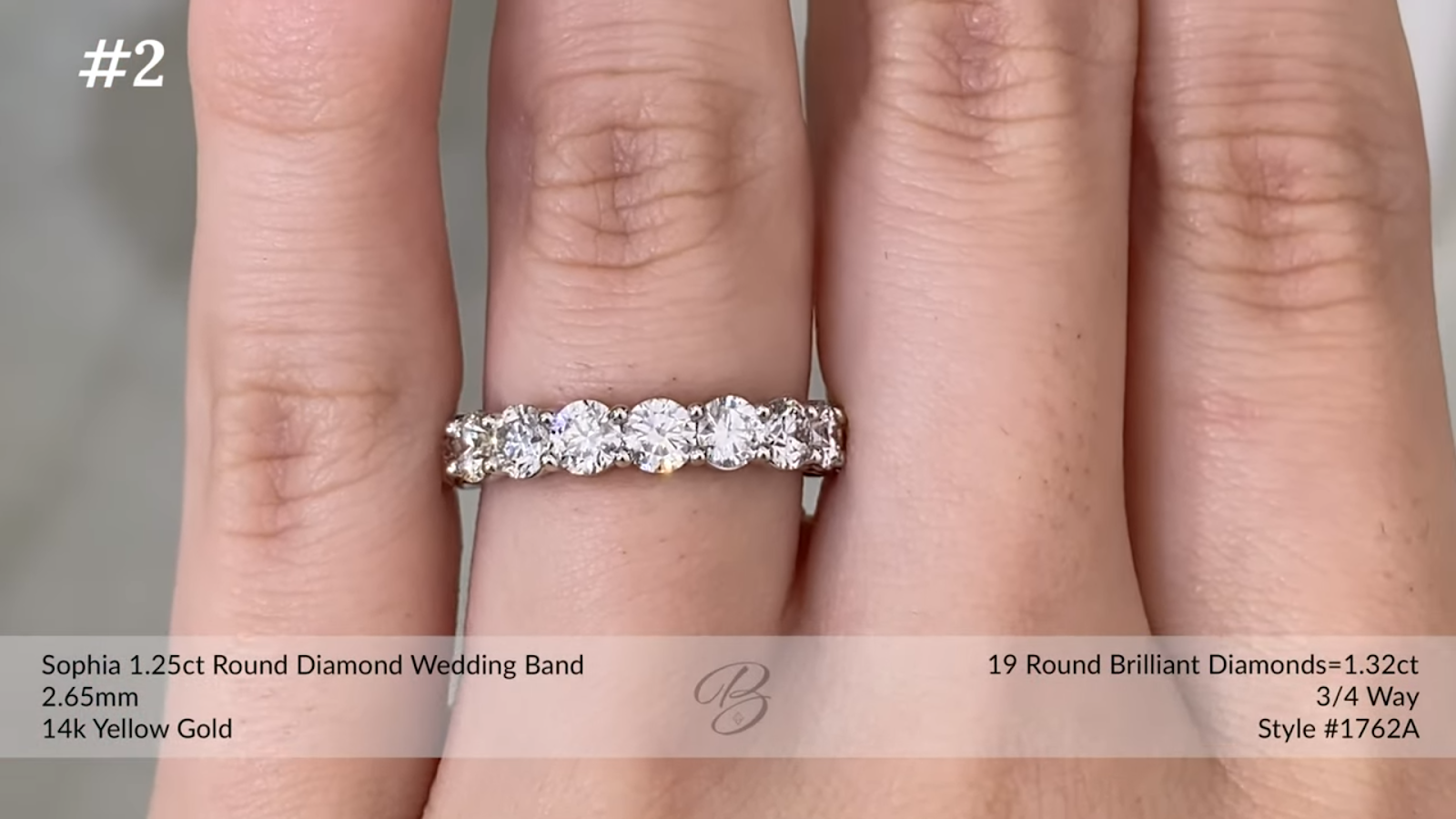

For a classic touch, you might opt for a traditional straight band with round diamonds. While this might show a tiny bit of a gap, it's quite minimal and provides a lovely contrast to the three-stone ring. It's versatile enough to be worn on its own or stacked with other bands.
Now, let’s talk about the “bow tie” effect often seen with old mine cuts. This distinctive feature is part of the old mine charm, so if you're after an old mine cut without the bow tie, you might want to consider a round diamond instead. It's a signature element that adds to the uniqueness of the cut!
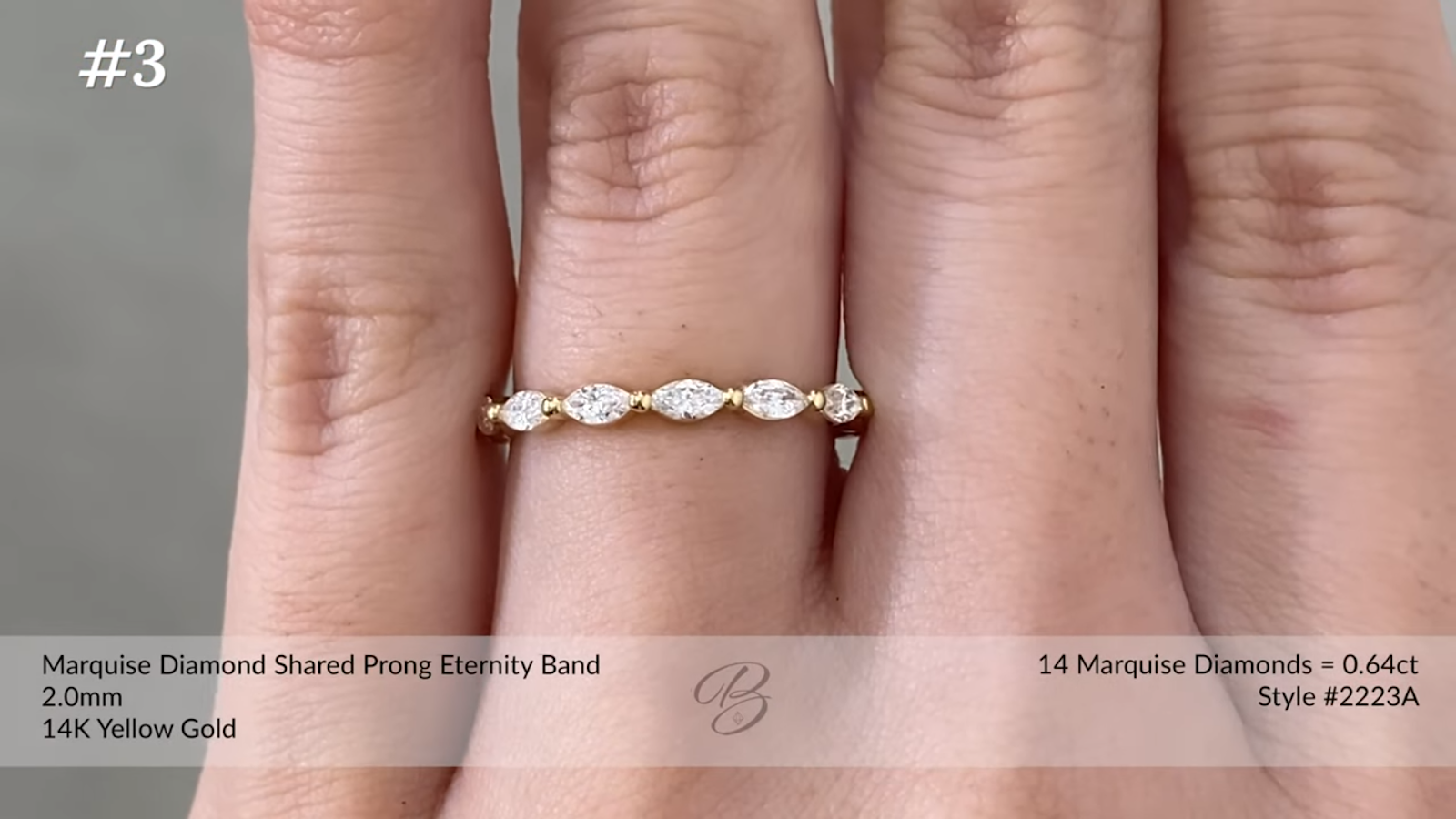

One pairing that I absolutely adore is a delicate marquee band. It complements the trillions on the side perfectly, accentuating their points. It’s a dainty choice that enhances the overall look while still allowing for stacking. You can even add a geometric faceted gold band on top for more coverage—this look is so on-trend right now and pairs beautifully with additional accent bands.
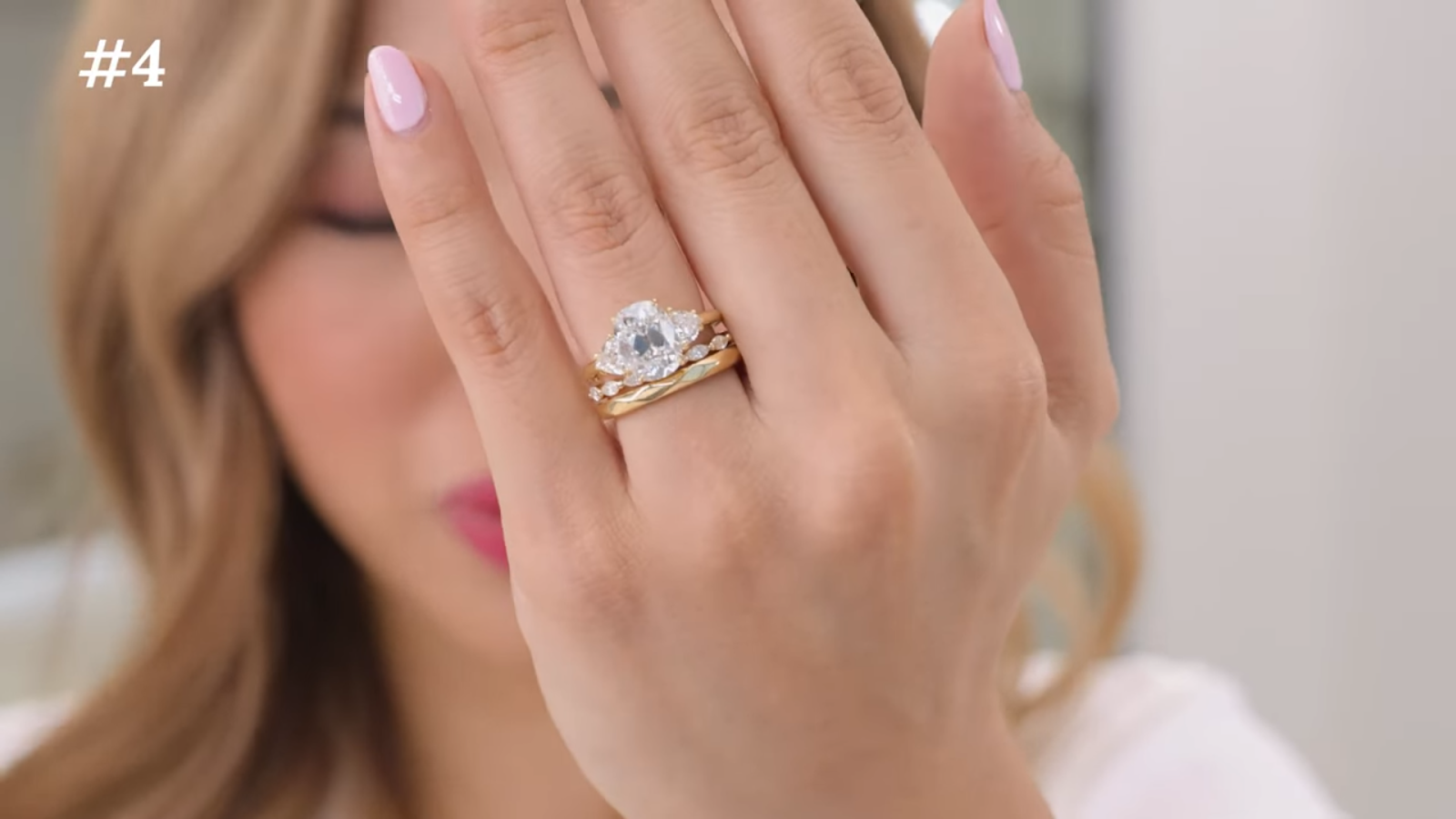

Here’s a quick visual: imagine the marquee band paired with a gold faceted band as well. The separation between the two adds a lovely dimension to the ring.
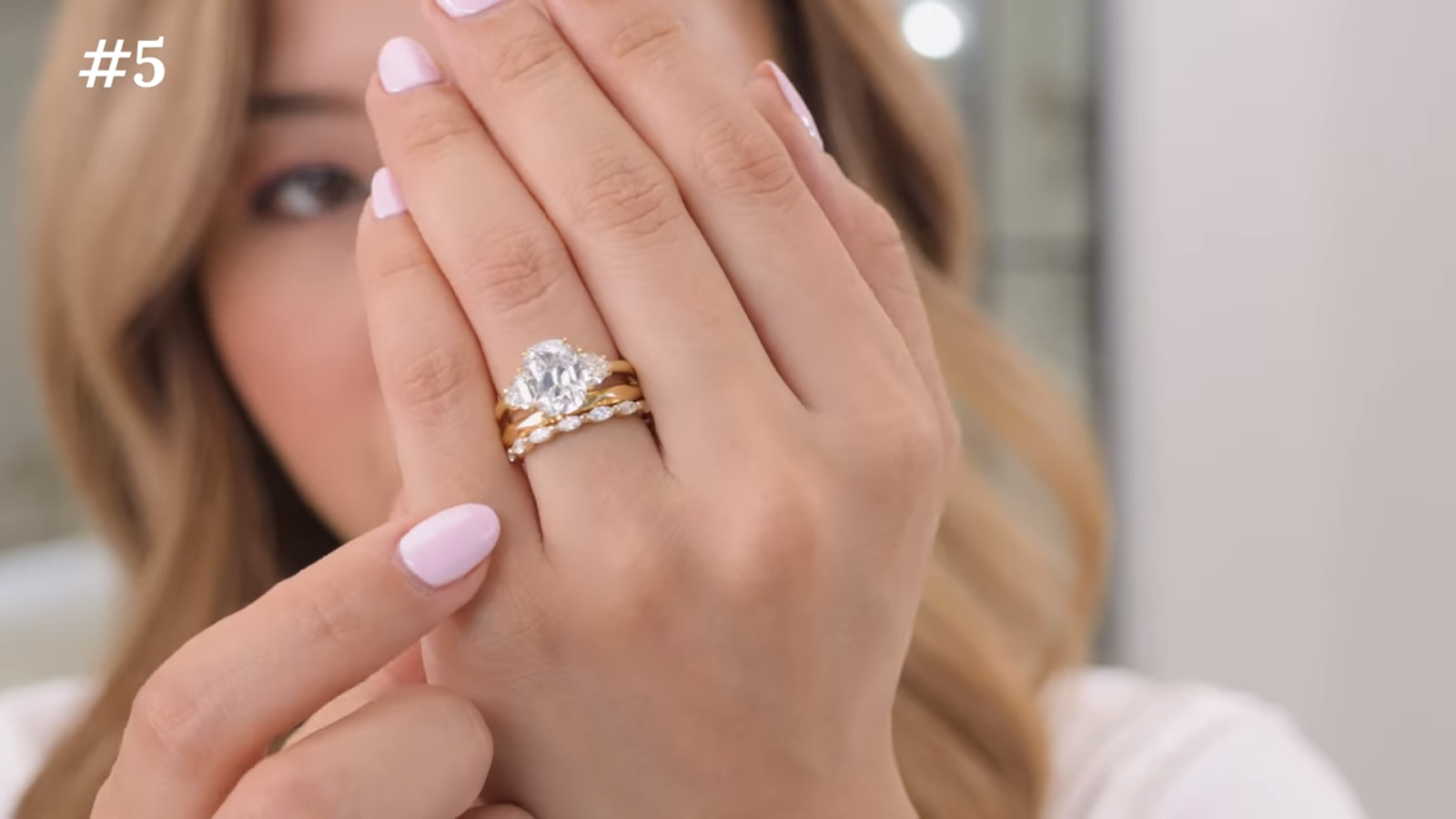

Another stunning option is an oval gold band set East-West. This brings out the point of the trillions and adds a vintage vibe.
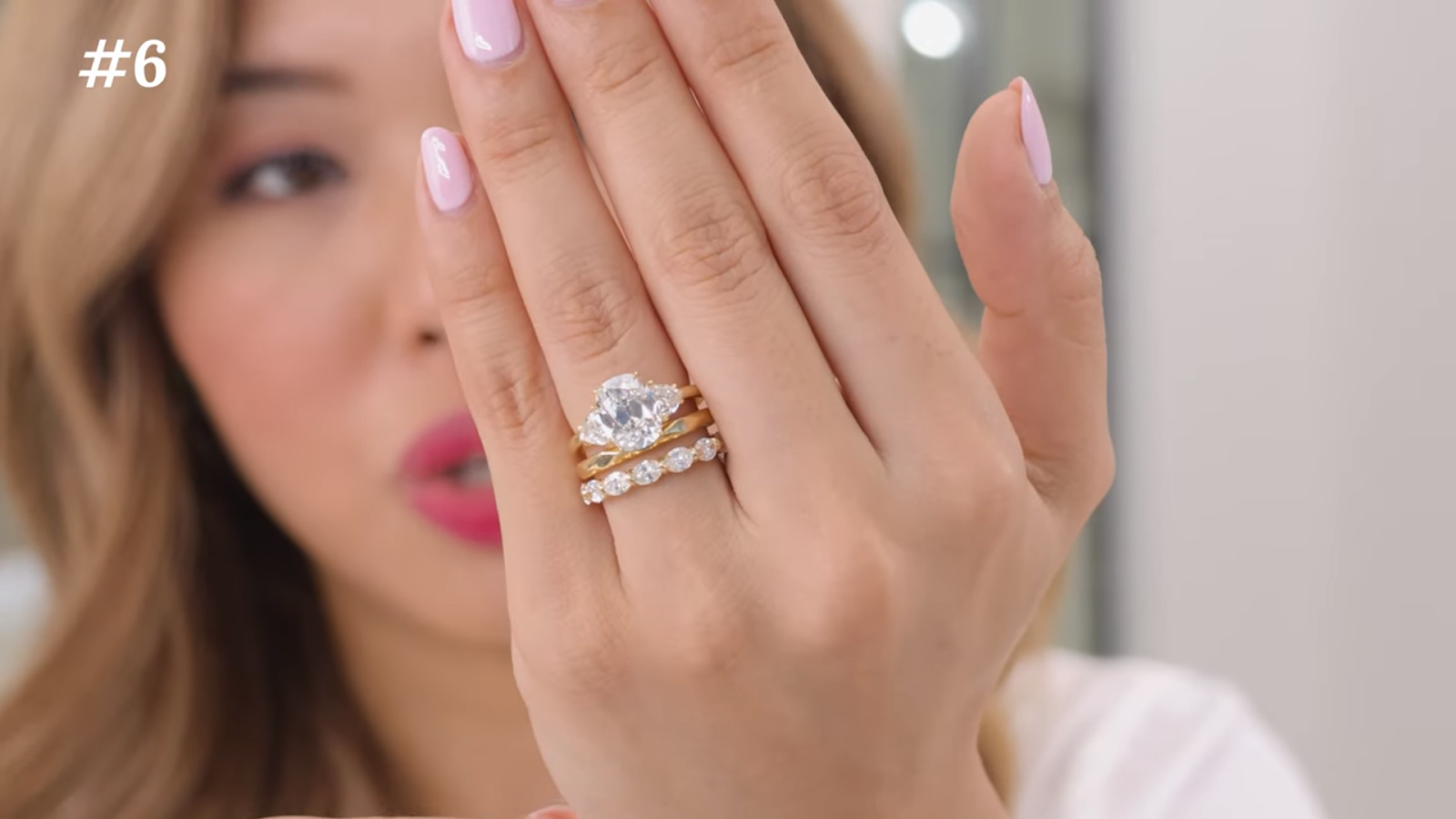

I’m really excited about these band options and can’t wait to know which one is your favorite! And don’t forget, I’ll be linking to a video where I share the story of my original old mine cushion engagement ring and how I ended up resetting it into a gorgeous gold piece. If you love diamonds as much as I do, you won’t want to miss it!


